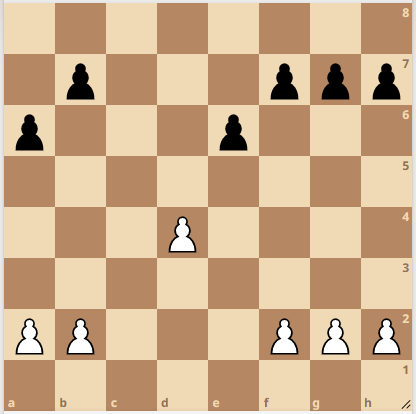One of the most important aspects of chess strategy is pawn structure. In chess, an isolated pawn is a pawn that has no friendly pawns on adjacent files.
The isolated pawn is a common feature of many chess openings, and it can have both advantages and disadvantages depending on the position and the player’s strategy.
In this article, we will explore what an isolated pawn is, how it can arise in a game of chess, and the various ways in which it can be used to either gain an advantage or become a liability.
Whether you are a beginner or an experienced player, understanding the nuances of isolated pawns can help you to improve your game and outmaneuver your opponent.
What Is An Isolated Pawn
In chess, an isolated pawn refers to a pawn that has no friendly pawns on adjacent files. This means that there are no pawns of the same color on either side of the pawn. An isolated pawn is often considered a weakness because it cannot be easily defended by other pawns.
Isolated pawns can occur in many different pawn structures, and they can arise from various openings and lines of play such as the French Defence, Nimzo-Indian Defence, Caro–Kann and Queen’s Gambit. They are typically found in the center of the board when pawns are exchanged there.
Players often try to create or exploit isolated pawns as part of their strategic plans. For example, a player might perform a pawn exchange in the center in order to create an isolated pawn in the opponent’s position, hoping to use it as a target for attack. Alternatively, a player might seek to trade off pieces in order to reach an endgame in which the isolated pawn becomes a weakness.
The Isolated Queen’s Pawn
An isolated queen’s pawn is a pawn on the d-file (d4 for White and d5 for Black) that has no friendly pawns on adjacent files. The IQP is a common feature of the Queen’s Gambit and related openings.
It provides the player with a spatial advantage, as well as the potential for attacking chances on the half-open c-file and e-file. The IQP can also serve as a potential target for the opponent’s pieces and create weaknesses in the player’s position.
Typical pawn structure of isolated queen’s pawn

Examples:
Queen’s Gambit Accepted isolated pawn

Tarrasch defense isolated pawn

Caro-Kann isolated pawn

Is An Isolated Pawn Good Or Bad?
An isolated pawn can be both a strength and a weakness, depending on the position and the stage of the game. Here are some general advantages and disadvantages of an isolated pawn:
Advantages
- Space: An isolated pawn can provide the player with additional space and more freedom for their pieces to maneuver.
- Initiative: An isolated pawn can also give the player the initiative by creating targets for attack and forcing the opponent to react to threats.
- Outposts: An isolated pawn can sometimes serve as an outpost for the player’s pieces, allowing them to control important squares and restrict the opponent’s mobility.
Disadvantages
- Weakness: An isolated pawn is often a weakness because it cannot be defended by other pawns, making it vulnerable to attack and capture.
- Targets: An isolated pawn can also serve as a target for the opponent’s pieces, allowing them to focus their attack and apply pressure on the player’s position.
- Endgame: In the endgame, an isolated pawn can be a liability, as it can become difficult to defend and may be easily captured.
Overall, whether an isolated pawn is good or bad depends on the position and the player’s strategy. A player who knows how to use an isolated pawn to their advantage can turn it into a strength, while a player who fails to handle it properly may suffer from its weaknesses.
What To Do With An Isolated Pawn?
What to do with an isolated pawn depends on the position and the stage of the game. Here are some general ideas for handling an isolated pawn:
- Control the open files: One of the advantages of an isolated pawn is that it creates open files on either side of the pawn. You should try to control these open files by placing your rooks or other major pieces on them.
- Defend the pawn: Since the isolated pawn is a weakness, it’s important to defend it adequately. You can defend the pawn with pieces, but be careful not to over protect it and become passive.
- Create counterplay: To compensate for the weakness of the isolated pawn, you should create counterplay by attacking your opponent’s position. Look for ways to create threats against their king or other targets.
Whether to get rid of the isolated pawn depends on the specific position. In some cases, it may be possible to eliminate the isolated pawn by exchanging it for a piece or sacrificing it for a positional advantage.
In other cases, it may be better to keep the isolated pawn and use it as a weapon to create threats and control space. Ultimately, the decision of whether to get rid of the isolated pawn or not depends on the specific position and the player’s strategic goals.
Wrapping Up
In conclusion, an isolated pawn is a chess pawn that stands alone with no friendly pawns on adjacent files. While an isolated pawn can provide a player with certain advantages such as increased space and potential for initiative, it can also be a liability if not handled properly.
A player must carefully consider the position and stage of the game to determine how best to handle an isolated pawn. With a thorough understanding of isolated pawns, a player can improve their strategic play and increase their chances of success on the chessboard.


